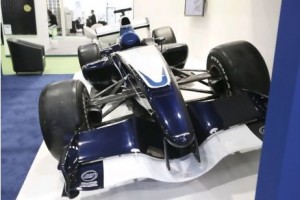By Kevin Hackett www.thenational.ae
It’s a well worn cliché perhaps, but racing really does improve the breed, and one exhibitor at the World Future Energy Summit I was surprised to see was the Williams Formula One team. Doug MacLennan is Williams’ sales and marketing manager and was on-hand to explain why there was an F1 car on the stand.

“We work out of our technology centre in Qatar and are taking F1 know-how to see if there’s a commercial marketplace for it,” he told Motoring. “And one of the technologies we’re looking at is the kinetic energy recovery system [Kers] that’s being used in F1. We’ve taken the system from our F1 cars, which is a flywheel set-up that stores energy and provides it back to the car for extra power when it’s called upon.”
The system has already been downscaled, he said, for use in endurance racing and Porsche has it fitted not only in the GT3 R Hybrid but also in the stunning 918 RSR, with which Porsche caused collective jaws to hit the floor at the Detroit motor show in early 2011. In that car, the unit sits beside the driver in the passenger compartment, helping push the RSR’s power output to 767hp (supplementing the V8 engine’s not inconsiderable 563hp).
“But it isn’t just race cars that benefit from this technology,” continued MacLennan. “It could conceivably be used in hybrid buses and light railway systems, for instance, and a larger unit has been designed to help power trams, larger trains and transportation systems like the Metro in Dubai. Basically, any vehicle that stops and starts often, where we have the opportunity to recover the braking energy and store it for a short period of time, can use this equipment to deliver the power back and accelerate.”
When it comes to personal transportation, at the moment there’s a collaboration between Williams and Jaguar for the hybrid C-X75 supercar, which was recently confirmed for production. “The benefits are obvious, because if you can harness the energy produced by a powertrain when a vehicle is decelerating and use it again when accelerating, performance is greatly enhanced and the net result is a decrease in fuel consumption. Which is why it’s being used in racing and in supercar development,” added MacLennan. More info



















